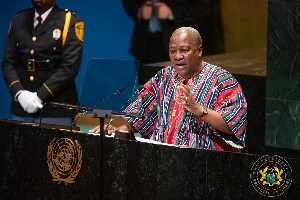It is such an important part of the body that a whole month has been dedicated to raising awareness on the need to give enough attention to the breast to prevent deadly cancer that affects mostly women.
According to the World Health Organisation (WHO), about 2,200 women have diagnosed with breast cancer annually in Ghana with over 1,000 of them dying due to late detection.
According to Head of the Korle Bu Breast Multidisciplinary Team (MDT), Prof. Joe Nat Clegg-Lamptey, only 25% of women who are diagnosed with breast cancer are cured with the 75% dying from the disease within 5years.
Prof Clegg-Lamptey noted that “people who smoke can get cancer of the lungs and if nobody smokes cancer of the lungs will be virtually wiped out, the same with cancer of the cervix, its caused by a virus but breast cancer is not so, so in spite of the fact that you may do a lot to prevent it, it still might come”.
He said the cause for a majority of breast cancer cases cannot be identified.
“When breast cancer is diagnosed early, it can be cured but when it’s diagnosed late then the cure rate is very low and unfortunately in this country, more than half of our patients come when it’s too late so at that point we can’t help them,” he added.
He said most people are afraid of the treatment and so resort to herbal medicine and prayers till when it’s too late before coming to the hospital.
Top among cancer cases in women worldwide is breast cancer, which is increasing particularly in developing countries such as Ghana due to late diagnosis.
Breast cancer begins in the breast tissue that is made up of glands for milk production, called lobules, and the ducts that connect the lobules to the nipple.
Breast cancer typically produces no symptoms when a tumour is small and is most easily cured at this stage. When breast cancer has grown to a size that can be felt, the most common physical sign is a painless lump. Sometimes breast cancer can spread to the underarm lymph nodes and cause a lump or swelling, even before the original breast tumour is large enough to be felt.
Less common signs and symptoms include breast pain or heaviness; persistent changes to the breast, such as swelling, thickening, or redness of the breast’s skin; and nipple abnormalities such as spontaneous discharge (especially if bloody), erosion, inversion, or tenderness.
The Korle Bu Breast Multidisciplinary Team is partnering the following hospitals to organise free breast screening for the month of October

Health News of Thursday, 12 October 2017
Source: www.ghanaweb.com













